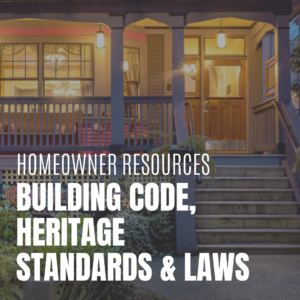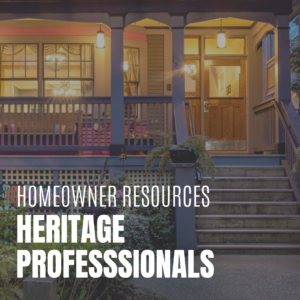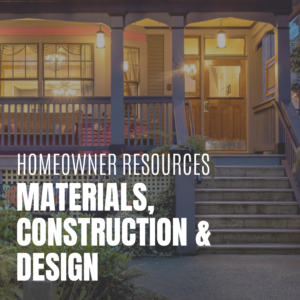- Heritage 101
- Advocacy
- Accessibility for Historic Places
- Climate & Sustainability
- Cultural Maps
- Heritage Place Conservation
- Heritage Policy & Legislation
- Homeowners
- Intangible Cultural Heritage
- Reconciliation
- Indigenous Cultural Heritage
- Setting the Bar: A Reconciliation Guide for Heritage
- 1. Heritage and Reconciliation Pledge
- 2. Acknowledging Land and People
- 3. Celebrating Days of Recognition and Commemoration
- 4. With a Commitment to Learn
- 5. Committing to Strategic Organizational Diversity
- 6. Mission-Making Room for Reconciliation
- 7. Possession, Interpretation, Repatriation and Cultural Care
- 8. Shared Decision Making
- 9. Statements of Significance and other heritage planning documents
- 10. Heritage Conservation Tools, Local Government Act
- Racism: Do Not Let the Forgetting Prevail
- Taking Action: resources for diversity and inclusion
- Webinars On-Demand
Homeowner Resources : Insurance
Why it matters
Educating yourself on the specifics of heritage property insurance will ensure you find coverage that supports you through potential disasters. You might be worried that insurance will be expensive and difficult to obtain for your home. This doesn’t have to be true. Research and asking the right questions are key in finding insurance to suit your situation.
Before insuring, consider…
- If you have knob & tube wiring, can your prospective insurer cover it?
- Make a maintenance plan because your heritage property is more susceptible to wear and tear
- Make sure that your provider is insuring your home to ‘replacement cost’.
- Keep accurate records including photographs of key features to accurately assess your home’s value and help insurers make an informed decision
Resources
Understanding Heritage Property Insurance
» HBC Quick Study: Insuring Heritage Properties
» Insurance Bureau of Canada: Insuring Your Heritage Home Introduction
» Understanding the Challenges in Insuring Heritage Properties
» Understanding Heritage Real Estate: Perceptions and Practice
» Heritage Designation and Insurance

Get Insured
» Vancouver Heritage Foundation: List of Potential Insurance Providers (use at own discretion)
» HBC Webinar: Q&A with Insurers
» Insurance Bureau of Canada (IBC):
– Tips for Insuring Heritage Properties
– IBC Helpline: 1-844-227-5422
– Heritage Property Risk Prospectus
FAQ
Are there rebates or tax credits for owners of older homes to offset high insurance costs?
While not designed to specifically offset high insurance, tax credit/rebate programs do exist in some BC municipalities. To qualify for these tax credits, older homes are most often required to be Heritage Designated by the municipal government or regional district.
Learn more about Heritage Designation here.
We encourage you to contact your local government directly to see if they have a tax rebate program for older homes, and if so, how your home could qualify.
What does ‘Replacement Cost’ look like in the context of insuring an older home
One difficulty that owners of older homes face when speaking with insurance brokers is the approach that a heritage building has to be covered for replacement in all the original materials, which is not cost effective. Knowledge and documentation of your property’s Character Defining Elements, with room for some choices around materials and what is replaced will make insurance easier to obtain.
Why is insurance so high for heritage homes?
From our Insuring Heritage Properties Resource:
“The reason some heritage properties cost more to insure is usually down to the rebuild costs. In the event of a loss, there are strict rules around what can be replaced, and the standard to which it must be replaced. What many people don’t consider is that it’s actually more expensive to rebuild a heritage home than it is to build a new one. Building techniques and materials evolve over time, incorporating technology and mass production. At the same time, many trades or materials – specific types of plastering, for example- that were perhaps popular 150 years ago when the heritage home was built, are now niche and, as such, they come at a premium.”
– Daniel Mirkovic, CEO and President of Square One, a Vancouver-based home insurance specialist








